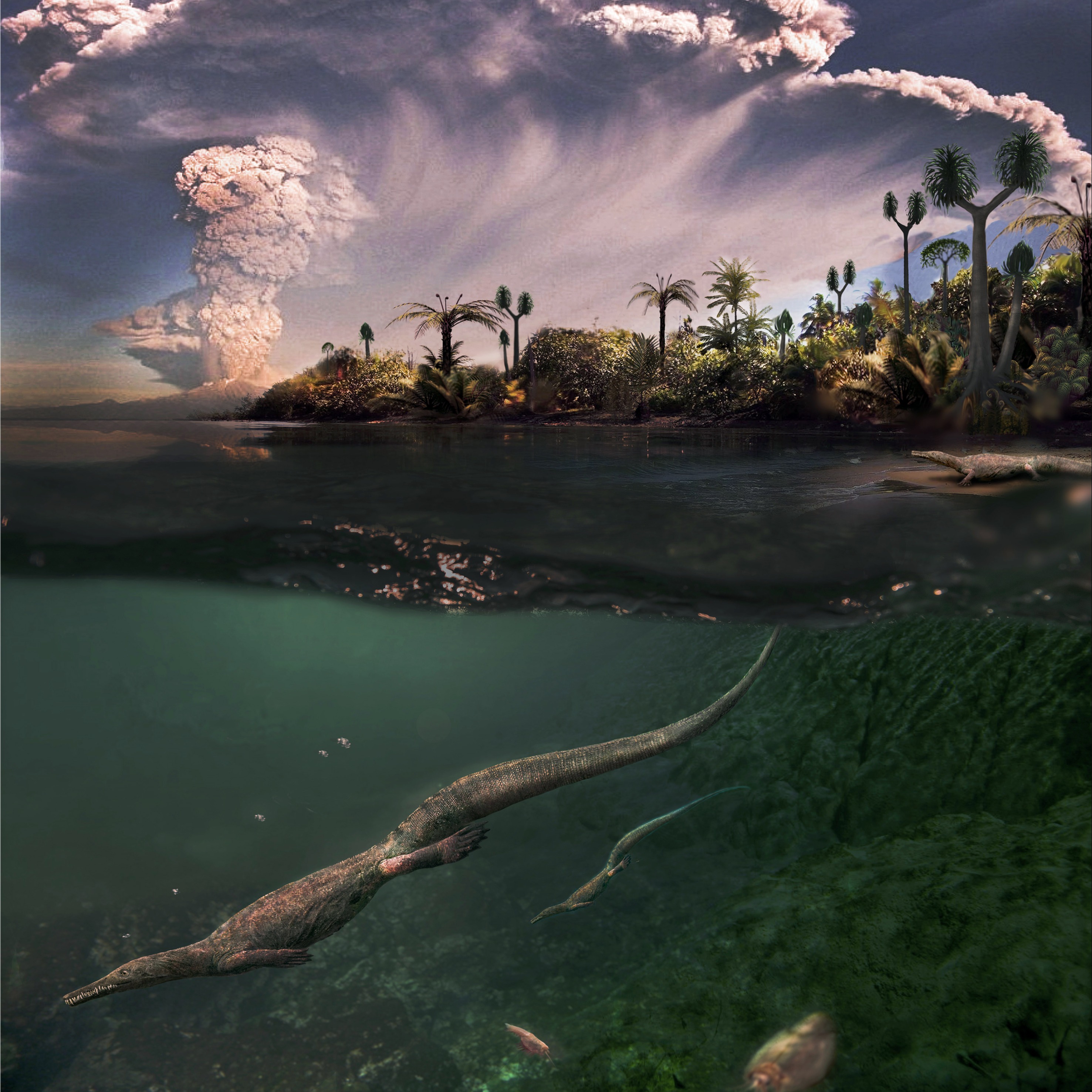Mesosaur: The Oldest Known Semi-Aquatic Reptile
Posted on Categories Discover Magazine

It was the early 1980s on the Hastings family’s ranch in Uruguay. The land, called El Baron Ranch, is made up of nearly 3,000 acres of soft rolling hills, meandering streams, and indigenous trees, where today, the family raises free-range cattle.
At the time, the family was building a 1,600-foot dam on the land to irrigate rice. And in order to construct the dam, workers sliced off part of a hill. Hidden within the hill, in an outcrop of rock, was a group of fossils nearly 280 million years in the making. The animal found inside the outcrop averaged about a meter (about 3 feet) in length with a long snout and tail and thin rows of delicate teeth. The family had found a Mesosaur.
(Credit:Graciela Piñeiro)
Outcrop in El Baron Ranch
What Is a Mesosaur?
A Mesosaur is an extinct semi-aquatic reptile. As one of the earliest known reptiles to have returned to an aquatic lifestyle, Mesosaurs have provided valuable insights into the early adaptations of reptiles to different environments.
When Did Mesosaurs Live?
According to Xavier Jenkins, a graduate student who studies prehistoric reptiles at Idaho State University, Mesosaur lived during the early Permian, a fascinating interval of time when there were still glaciers on the poles.
“It lived very close to the poles,” said Jenkins. “In a cool, wet environment alongside mostly fish and crustaceans in the water.” Huge reptiles like Dimetrodon, a back-sailed beast of a predator, would have lived on land. “Mesosaur was similar to a marine iguana today,” Jenkins said.
What Did Mesosaurs Eat?
Its interlocking jaws resembled a cage perfect for catching and noshing on crustaceans and fish. Researchers have also found ample scales in its stomach deposits.
How Did Mesosaurs Reproduce?
But perhaps most importantly, the fossils told a story of reptile reproduction that had never been told before, says Graciela Piñeiro, the Uruguayan biologist and paleontologist whose work led to the discovery of Mesosaur fossils in Uruguay.
Her work at El Baron Ranch led to the uncovering of the first preserved Mesosaur embryo. “This discovery is the only evidence of amniote reproduction during the Paleozoic,” she says.
(Credit: Javier Calvelo)
Almost complete juvenile Mesosaurus from Uruguay
Were Mesosaurs Aquatic?
The fossils represented the oldest known reptiles to move from land to water and become semi-aquatic. “They are the only known vertebrates from Gondwana at the Early Permian, and they are represented by thousands of well-preserved and almost complete skeletons,” wrote the study authors in Frontiers in Earth Science.
We have more fossil remains of Mesosaur than most any other reptile that lived during the Permian, but they are only found in South America and Africa, nowhere else on the planet. “They are very restricted to lake deposits within the Gondwana region,” says Jenkins. This is probably because reptiles had not yet become semi-aquatic (or moved to water) in other parts of the world.
Read More: 5 of the Most Interesting Prehistoric Marine Reptiles
Evidence of Continental Drift
South America fits into Africa neatly if you look at a map. It’s likely that at the time of Mesosaur, the continents were connected. From the late Paleozoic Era until the very late Triassic, around 200 million years ago, North America was a contiguous continent that included Africa, South America, and Europe.
Do Mesosaur Fossils Prove Continental Drift?
Mesosaur fossils represent proof of continental drift. “The Earth had experienced the formation of a supercontinent known as Pangea, and so, South America and Africa were united as a single mass of land,” says Piñeiro. “Mesosaur remains are found on both the continents, and according to their anatomical features, they were not able to cross a water body as the Atlantic Ocean, which indeed did not exist at that time.”
How Mesosaurs Reveal Reptile Evolution
Mesosaur and the research being done in places like El Baron Ranch in Uruguay is telling us a larger story about how reptiles became what we know them as today. “The species is turning out to be really important for our understanding of reptile evolution,” says Jenkins.
Research is showing that the species is closer to modern reptiles than we previously thought. But Jenkins says we’ve only just scratched the surface of what this ancient reptile can tell us about what the planet would have looked like before the Age of Dinosaurs.